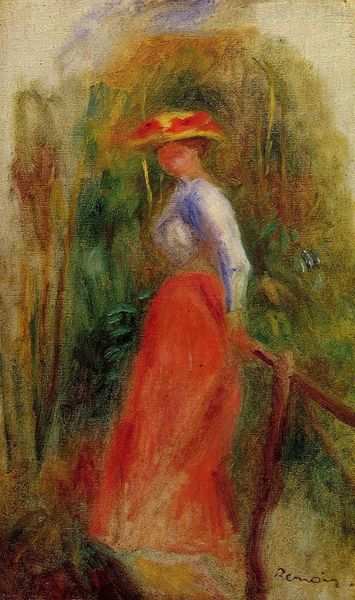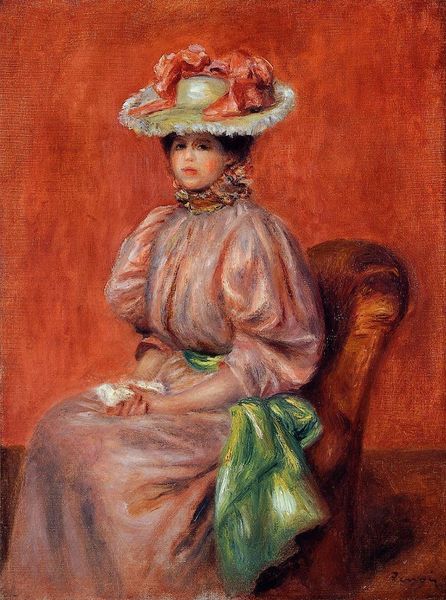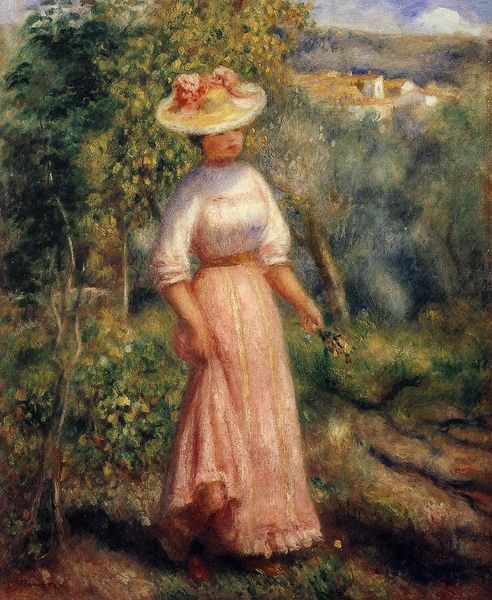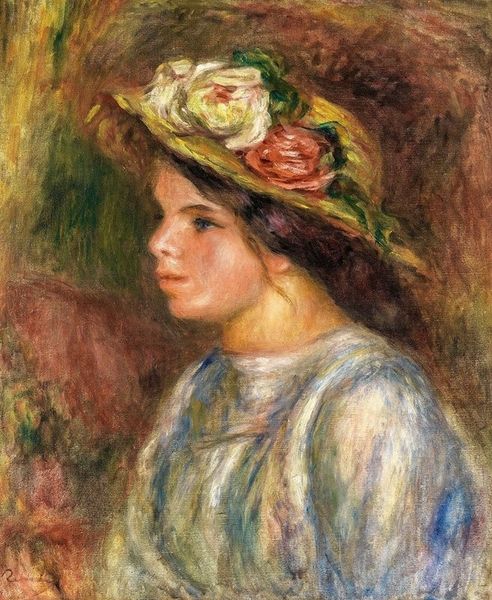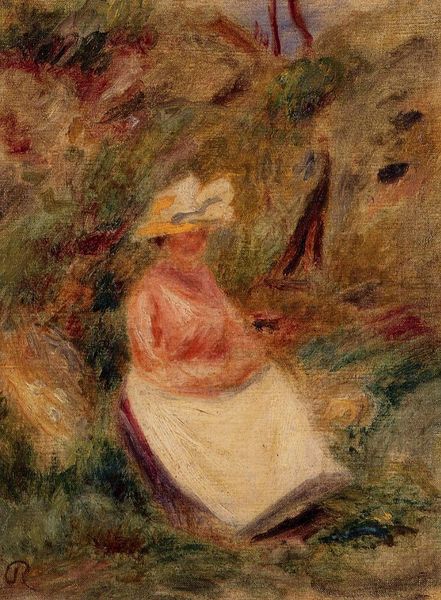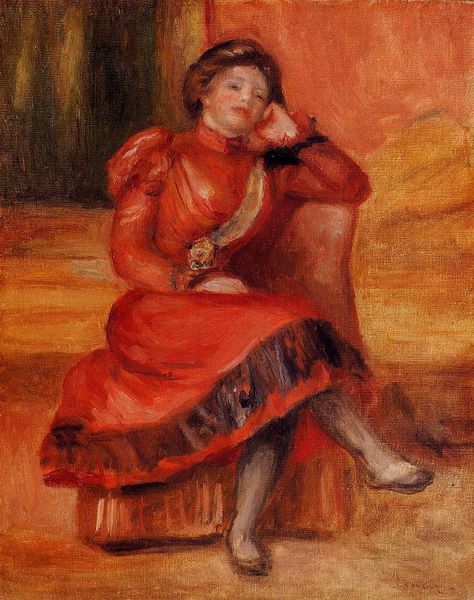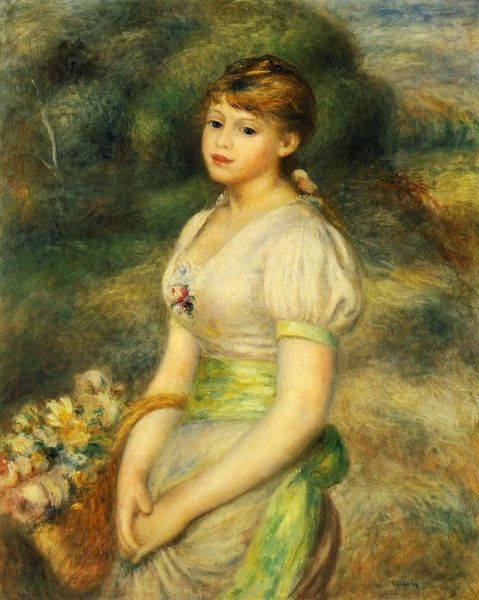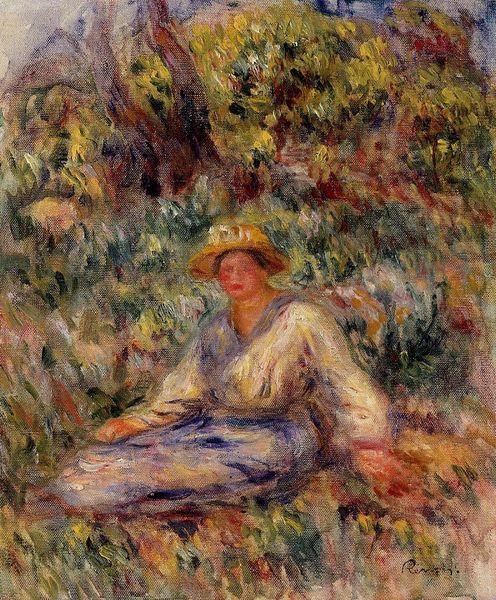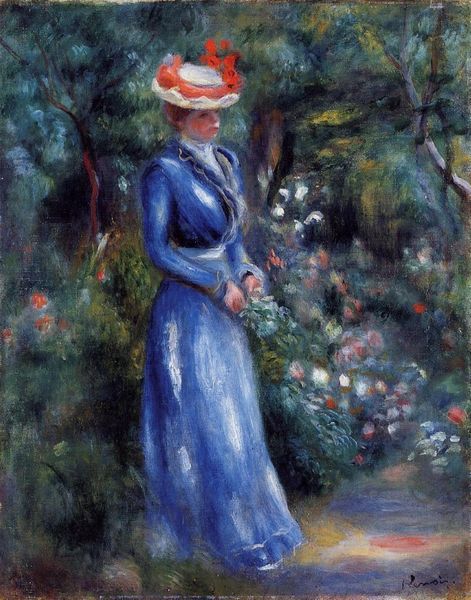
Copyright: Public domain
Editor: Here we have Pierre-Auguste Renoir’s “Gabrielle in a Straw Hat” from 1900, rendered in oil paint. There’s something so serene and intimate about it. I’m curious, what stands out to you when you look at this piece? Curator: Considering its historical context, it presents a sanitized vision of domestic life at the turn of the century. Note how Renoir consistently employed Gabrielle, often as a stand-in for nudes or mothers, carefully controlling the presentation of female domesticity within a market that eagerly consumed such images. Does the inclusion of the straw hat challenge or reinforce these conventions? Editor: I suppose it depends on how we view the hat. It feels like an intentional visual contrast. It dresses Gabrielle up, but the overall feel is still so intimate and personal. Curator: Precisely. Consider the politics embedded within Impressionism itself. Initially a rebel movement against academic tradition, it eventually became highly commercialized. Renoir shrewdly navigates this tension, creating art that feels both intimate and publicly appealing, wouldn’t you agree? Editor: I think I see what you mean. It's easy to overlook the political dimension behind seemingly simple paintings like this one. I’m also wondering what impact this has on modern consumers viewing it now in galleries. Curator: Indeed. These portrayals contributed to a visual culture that, while seemingly innocent, actively shaped societal expectations around gender roles and domestic life, still permeating our consumption of art today. I am glad you are bringing this to the fore. Editor: It’s given me so much to think about!
Comments
No comments
Be the first to comment and join the conversation on the ultimate creative platform.
